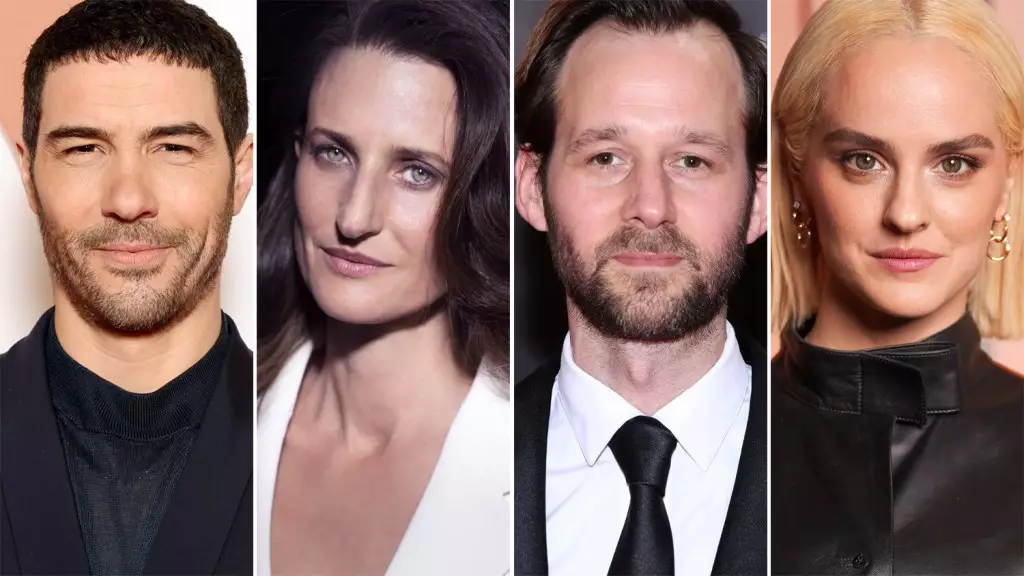The world of cinema continuously seeks to breathe new life into classic stories, and the upcoming adaptation of Victor Hugo’s “Les Misérables” exemplifies this creative endeavor. Under the adept direction of Fred Cavayé, this adaptation is poised to deliver a dynamic interpretation by infusing action and contemporary relevance into an age-old narrative. The project is drawing attention not only for its ambition to stay true to the original material but also for its commitment to highlighting pressing social issues that resonate in today’s world.
A Strong Ensemble Cast
One of the most exciting aspects of this reimagining is its distinguished cast, which features Tahar Rahim, Camille Cottin, and others, alongside previously announced star Vincent Lindon as Jean Valjean. Rahim, known for his compelling performances in “Madame Web” and “Monsieur Aznavour,” takes on the role of Inspector Javert, Valjean’s relentless foe. This dynamic of cat and mouse, wherein a hardened ex-convict is pursued by a man staunchly committed to law and order, offers fertile ground for exploring themes of morality, redemption, and obsession.
In a dramatic twist, Cottin and Benjamin Lavernhe step into the shoes of the malevolent innkeepers, the Thénardiers. These characters embody societal cruelty and corruption, and through their portrayal, the film aims to delve into the dark side of human nature that often exacerbates social injustice—themes that echo throughout Hugo’s original text and remain relevant in contemporary discourse.
Revitalizing Female Representation
Another layer to this adaptation comes through the character of Fantine, played by actress Noémie Merlant. Rather than merely a plot device, Fantine will be depicted with depth and agency, allowing for a more nuanced exploration of her struggles. Merlant’s performance is expected to shed light on the systemic issues facing women in society today—an essential aspect that Cavayé intends to emphasize. This approach aligns with the film’s broader goal to showcase strong female characters whose narratives transcend time.
The heart of the story remains steeped in themes of redemption and the fight against societal injustice, but Cavayé’s commitment to foregrounding female perspectives introduces a refreshing dimension to the adaptation. As audiences navigate through the plight of these characters, the importance of compassion and solidarity in addressing social ills is anticipated to resonate powerfully.
Cinematic Vision and Production Quality
The film’s technical crew, including cinematographer Denis Rouden and production designer Pierre Quéffélean, promises to elevate the storytelling with exceptional visual artistry. By choosing Paris and Bordeaux as locations, the film aims to capture the historical essence of 19th-century France while juxtaposing it with the immediacy of modern cinematography. This duality serves to connect the historical struggles of the characters with the contemporary experience of audiences, enhancing the narrative’s emotional impact.
Furthermore, the production boasts a collaboration with major players, including Studiocanal, Netflix, and various French production houses. Such alliances not only bolster the film’s budget and resources but may also enhance its global reach, allowing the classic tale to be rejuvenated for a wider audience. The strategic partnership underscores the relevance of the story, while emphasizing that significant narratives will always find a place within mainstream cinema.
The Journey Ahead
As production gears up for a 17-week shoot, anticipation swells for what Cavayé promises to be a potent cinematic experience. The film’s adaptation, rooted in the original’s profound narrative but accentuated with contemporary themes, signifies a bold approach to storytelling that actively engages with societal dynamics. The interplay between Valjean and Javert becomes more than a duel of wits; it is a confrontation with the moral dilemmas that define justice, freedom, and humanity.
As audiences prepare to witness the intersection of history and action, the cinematic rendition of “Les Misérables” stands as a testament to the timelessness of Hugo’s themes and the imperative to continue their exploration in today’s ever-evolving societal landscape. Through a careful blend of character depth, critical themes, and visual richness, this adaptation is not merely a retelling but an invitation to reflect on the injustices that persist in the fabric of our modern reality.
